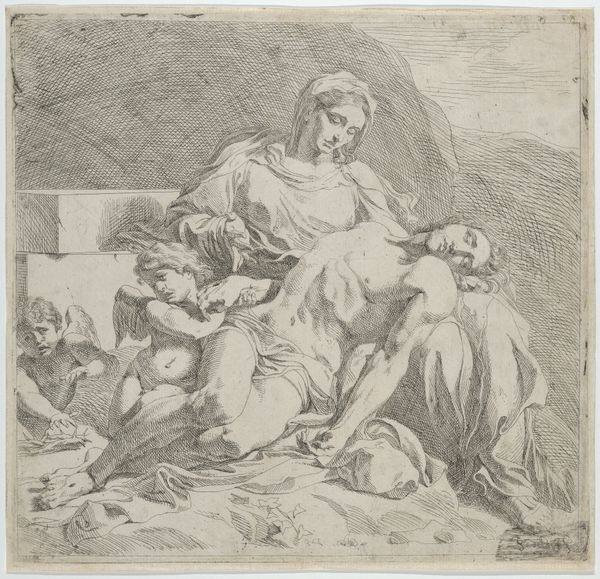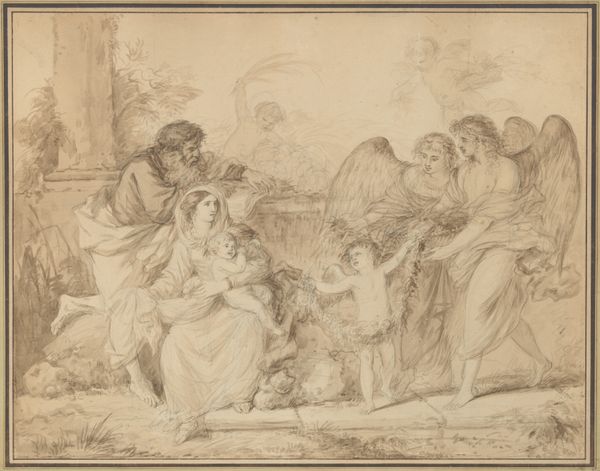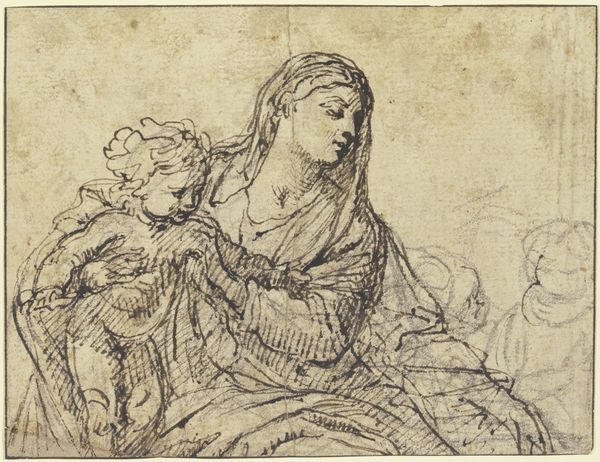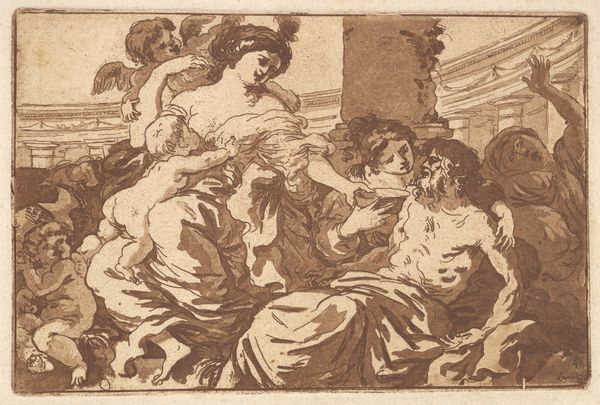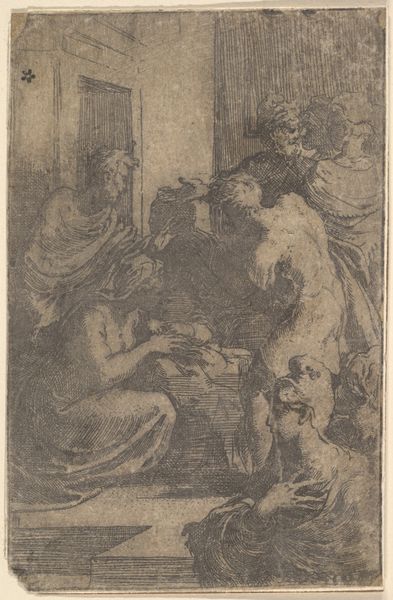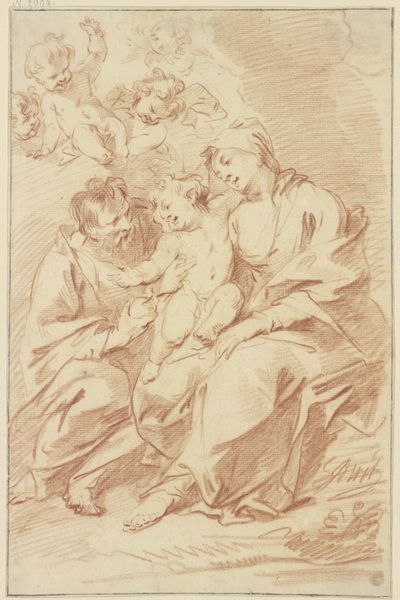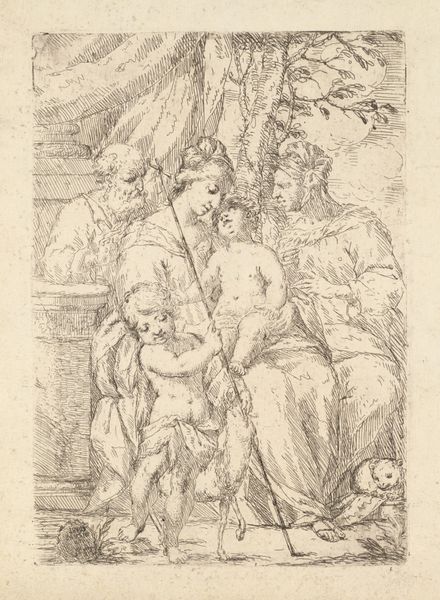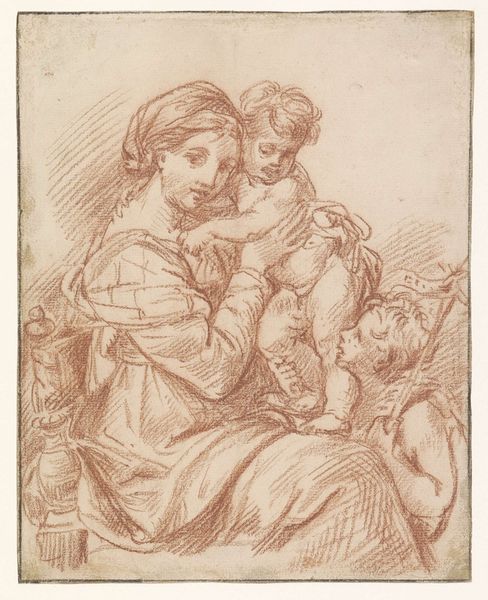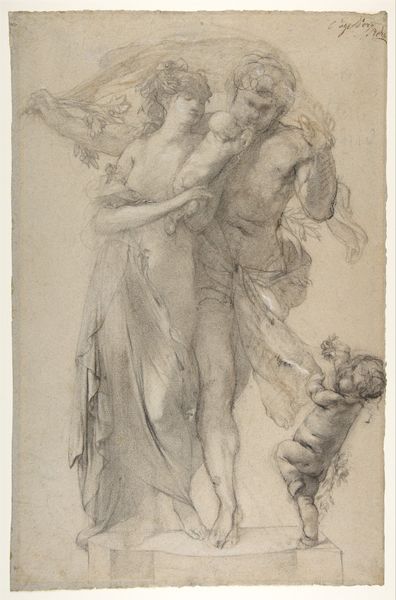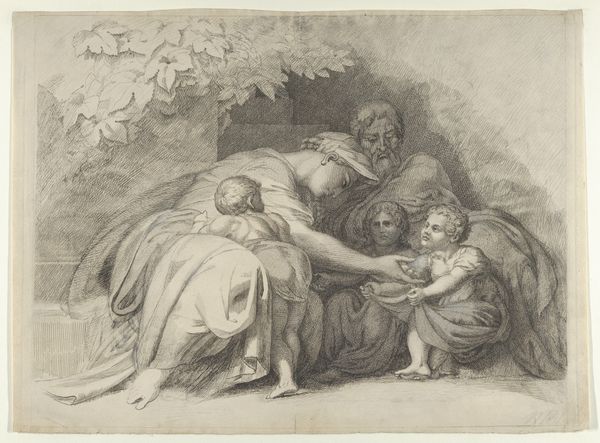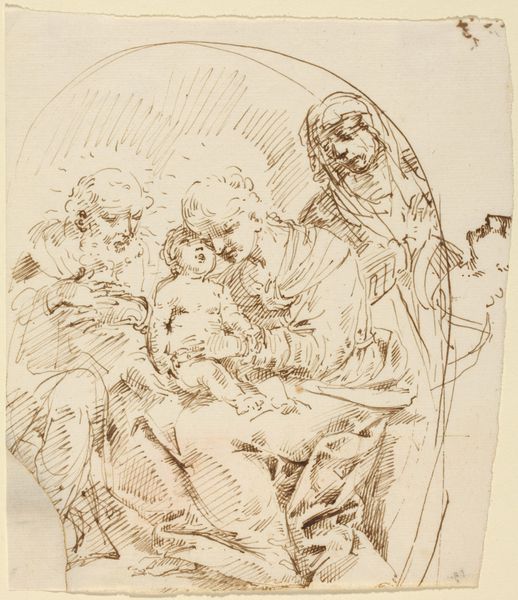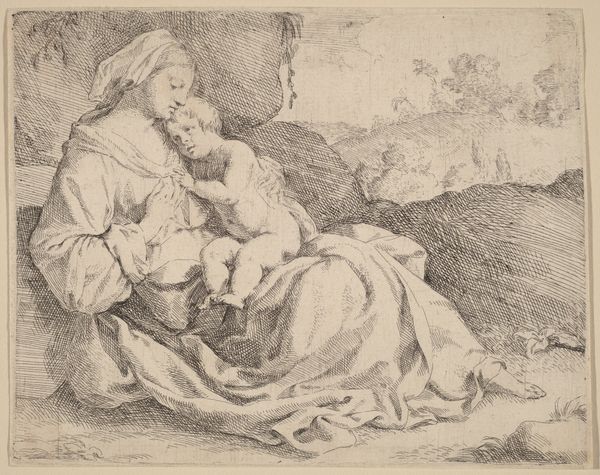
Dimensions: sheet: 5 11/16 x 7 13/16 in. (14.4 x 19.8 cm)
Copyright: Public Domain
Editor: So, we're looking at "An Allegory of Charity" by Jean-Jacques Lagrenée, created sometime between 1770 and 1790. It’s a charcoal drawing and print. I'm struck by how dynamic the composition is. There’s almost a swirling energy. How would you interpret this piece? Curator: Focusing on its materiality, this charcoal drawing offers an intriguing insight into artistic production in the late 18th century. It speaks to the intersection of artistic skill and economic forces. The readily available and relatively inexpensive nature of charcoal allowed artists to explore complex themes and compositions. Editor: Inexpensive? Curator: Precisely. Unlike oil paints or other costly materials, charcoal allowed for preparatory sketches, studies, and even finished works for a broader consumer base. Notice how the rapid strokes and shading suggest speed and efficiency? Consider its social context – the rise of a merchant class with disposable income fueling the demand for art objects beyond the patronage of the aristocracy. How do you think that impacted the artist's choices? Editor: I suppose it made art more accessible. Were prints more affordable as well? Curator: Absolutely. Printmaking techniques made the work reproducible, expanding access exponentially and reshaping the art market. It moved art beyond a unique, handcrafted luxury object. Lagrenée had to consider who his audience was, and how his choice of medium impacted the circulation of his work, and, subsequently, his economic success. Editor: So the choice of charcoal and printmaking reflects both artistic expression and a strategic response to economic and social conditions of the time. Curator: Exactly. By examining the material realities of this drawing and print, we can unravel a richer understanding of 18th-century artistic practice. Editor: That definitely gives me a new way to appreciate not just the artwork's beauty but also its role in a changing society. Curator: And a reminder that even “allegory” has a material cost and context.
Comments
No comments
Be the first to comment and join the conversation on the ultimate creative platform.
